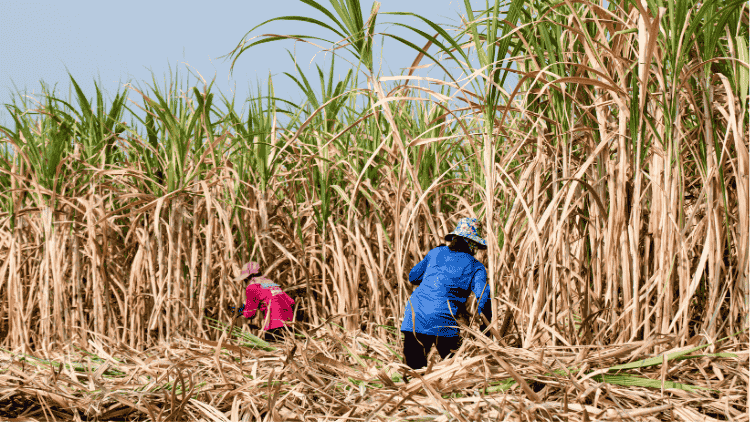
Best Practices to Prevent the Spread of Sugarcane Mosaic Virus
Share
Sugarcane is one of the most valuable commercial crops, yet it faces constant threats from plant pathogens that can drastically reduce yield and produce quality.
Among these, the sugarcane mosaic virus stands out as one of the most harmful.
This viral disease affects not only the growth of the crop but also the overall productivity of sugarcane farming, causing significant economic losses for cultivators worldwide. Its rapid spread makes it a challenge that farmers cannot overlook.
Similar to other viral infections in plants, early detection and timely action play a crucial role in limiting damage. Farmers must be equipped with the knowledge to identify, manage, and prevent the spread of such infections beforehand. This is especially important in sugarcane cultivation, where viral infestations spread quickly.
With effective sugarcane mosaic virus treatment and prevention strategies, farmers can protect their crops, minimize yield loss, and ensure healthier harvests.
In this blog, we will be discussing more about the mosaic virus in sugarcane, identifying its common symptoms and the most effective practices to prevent its spread organically. Let’s learn how to make your sugarcane fields virus free!
What is Sugarcane Mosaic Virus?
The Sugarcane Mosaic Virus (SCMV) is a destructive plant pathogen of the family Potyviridae. This virus is considered a major agricultural threat due to its high economic impact on Sugarcane, Maize, and other plants in the Poaceae family. Its presence has been reported in 80 countries across six continents till now.
This virus generally spreads through Aphids (a type of insects) by feeding and can infect healthy plants over a couple of days. Mechanical transmission is also possible from plant to plant and the virus can enter the leaves through injuries. Initial sugarcane mosaic virus symptoms appear in about 10 to 30 days after infestation.
Common Sugarcane Mosaic Virus Symptoms
Since viral infections spread quite rapidly in plants, recognizing sugarcane mosaic virus symptoms at an early stage is essential for timely action and effective crop management. Farmers should be alert to visible signs in their sugarcane fields, as these indicators often reveal the presence of infection before it spreads widely.
Below are some common symptoms of SCMV that farmers must keep an eye on to safeguard their sugarcane plants;
Mosaic Leaf Patterns
The characteristic symptom of this viral infestation is the irregular mosaic pattern on leaves. These appear as alternating light green and dark green streaks that make the leaf surface look patchy. The severity of this symptom often indicates how advanced the infection is, with younger leaves showing the clearest signs.
Stunted Growth
Plants severely infected with sugarcane mosaic virus usually exhibit stunted or slow growth. They fail to reach their normal height, which directly impacts yield. The reduction in size is due to disrupted photosynthesis and nutrient absorption, leaving the plant weaker and less productive compared to healthy sugarcane stalks.
Reduced Tillering
Infected plants often show reduced tillering, meaning fewer side shoots emerge from the main shoot. This significantly decreases the plant population per unit area, reducing productivity. Since tillers play a major role in overall yield, their decline signals an economic loss for farmers if the infection is not managed properly.
Chlorotic Streaks
Chlorotic streaks, or yellowish stripes along the leaves, are another common sign of viral infection. These streaks limit photosynthesis and reduce the plant’s ability to produce energy. If left untreated with proper sugarcane mosaic virus treatment, the condition can spread rapidly, reducing the overall disease resistance of the crop.
Narrow and Brittle Leaves
The leaves of affected sugarcane plants tend to become narrower, brittle, and more fragile than usual. This not only reduces the leaf’s ability to absorb sunlight effectively but also makes the crop more vulnerable to external stress factors such as wind or drought. This also decreases the photosynthetic capability of the plants.
Poor Sucrose Content
Sugarcane affected by SCMV often shows reduced sucrose levels in the stalk. This significantly harms the crop quality and lowers the overall sugar yield. Since high economic value of sugarcane is majorly due to its sugar content, viral infections in plants make the harvest less profitable and often lead to major financial losses.
Best Practices for Sugarcane Mosaic Virus Treatment and Prevention
While SCMV infection can prove detrimental for both plants and the environment, farmers can reduce the spread of this virus, protect crop health, and maximize yields by adopting proven organic agricultural practices. Effective, chemical-free sugarcane mosaic virus treatment goes hand in hand with strong preventive measures.
Let’s take a look at the most effective methods for treating and preventing the spread of sugarcane mosaic virus:
Use Organic Virucide
Applying organic virucide is one of the most effective eco-friendly methods for managing sugarcane infections. These natural solutions enhance the plant’s resistance to viral attacks, control disease spread, and protect soil health. Regular application ensures long-term crop protection without harming beneficial organisms.
Grow Resistant Varieties
Cultivating resistant sugarcane varieties significantly reduces the chances of infection. These varieties are naturally adapted to withstand viral stress, giving farmers a strong safeguard against infections. Selecting resistant varieties not only improves productivity but also minimizes the need for chemical-based solutions.
Avoid Damage and Injuries
Physical injuries on plants act as entry points for viral infections in plants, including the SCMV. Farmers should avoid mechanical damage during weeding, cultivation, or harvesting. Using clean, sharp tools and practicing careful handling lowers the risk of infection while ensuring healthy, vigorous, and virus-free sugarcane crops.
Spray Neem Oil
Neem oil is a natural pest deterrent that helps manage vector populations such as aphids, which spread the virus. Regular neem oil sprays on plants reduce pest infestations, limiting the chances of viral transmission. It also supports sustainable farming by providing an eco-friendly alternative to chemical insecticides.
Spread Diatomaceous Earth
Using diatomaceous earth in fields creates a protective layer around crops, helping deter insect pests that transmit sugarcane mosaic virus. Its abrasive properties harm soft-bodied insects, reducing their ability to survive and spread infection. This natural solution is safe, affordable, and highly effective for long-term prevention.
Promote Beneficial Insects
Encouraging beneficial insects like ladybugs, lacewings, and wasps, helps control harmful pest populations. These natural predators target aphids and other carriers of the virus, lowering transmission rates. Promoting biodiversity in fields also creates a balanced ecosystem, reducing reliance on synthetic pest control methods.
Improve Field Sanitation
Good field hygiene is key to preventing the spread of sugarcane mosaic virus symptoms. You must remove infected plants, clear weeds, and destroy crop residues instead of composting. Clean fields reduce chances of re-infection, helping farmers maintain a healthy environment for sugarcane growth throughout the season.
Implement Crop Rotation
Rotating sugarcane with non-host crops breaks the life cycle of both pests and pathogens. By disrupting the virus’s survival in the soil, crop rotation significantly reduces disease recurrence. This practice also improves soil fertility and structure, ensuring long-term sustainability of sugarcane cultivation and profitable yields.
Preventing Viral Infections in Plants with Octa Organics
Safeguarding crops from the sugarcane mosaic virus requires a balanced approach of prevention, timely detection, and sustainable treatments. By adopting best practices such as field sanitation, resistant varieties, and eco-friendly protection methods, farmers can minimize losses and ensure healthier sugarcane harvests.
If you’re looking for reliable, natural, and effective farming solutions, Octa Organics provides a wide range of organic agricultural products designed for pest and disease management. Our innovative products help protect crops, prevent pest infestations, and support healthier farming ecosystems, while promoting long-term sustainability.

